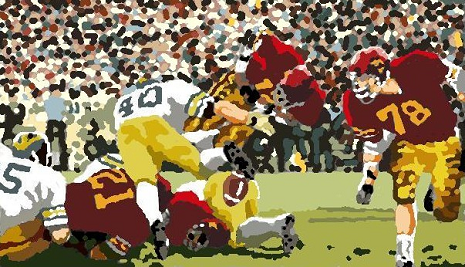2) Southern Cal 12-1
3) Oklahoma 11-1
4) Penn State 11-1
5) Michigan 10-2
6) Clemson 11-1
7) Notre Dame 9-3
8) Nebraska 9-3
9) Texas 9-3
10) Houston 9-3
11) Arkansas 9-2-1
12) Michigan State 8-3
13) Purdue 9-2-1
14) UCLA 8-3-1
15) Missouri 8-4
16) Georgia 9-2-1
17) Stanford 8-4
18) North Carolina State 9-3
19) Texas A&M 8-4
20) Maryland 9-3
In the third week of the 1978 season, #2 Southern Cal (12-1) traveled to Birmingham and defeated #1 Alabama (11-1) 24-14. I'll be going into much more detail on this issue, but in the end, there really isn't anything more to say than that. I would rate this as the single worst job the AP poll ever did at #1, excepting of course years when they did not count bowl games.
The only competition for worst #1 selection is Brigham Young in 1984, and while Alabama '78 was a far better team than BYU '84, I think they were a worse #1 selection because there was no excuse for it. At least voters touting BYU in 1984 could say that BYU was the only unbeaten team. That's one more leg than Alabama voters had to stand on in 1978.
The only possible way Alabama could merit #1 in 1978 after losing to Southern Cal by more than a touchdown at home is if Alabama played a markedly stronger schedule and/or outperformed USC by a country mile. So let's go ahead and take a look...

Charles White's "phantom touchdown"-- he went into the end zone, but the ball was recovered by Michigan at the one. Unfortunately, the refs never saw the ball come out, and Southern Cal was given the touchdown, eventually winning the Rose Bowl by just that much-- 17-10. USC finished #1 in the coaches' poll, but Alabama, whom they had previously beaten, took #1 in the AP poll.
